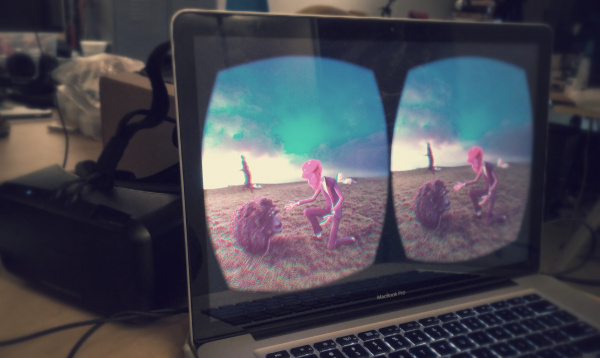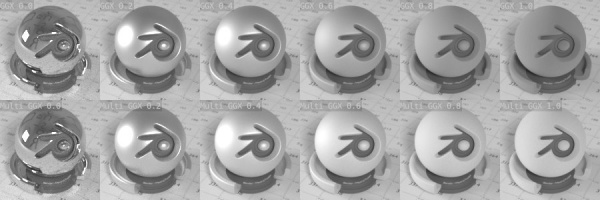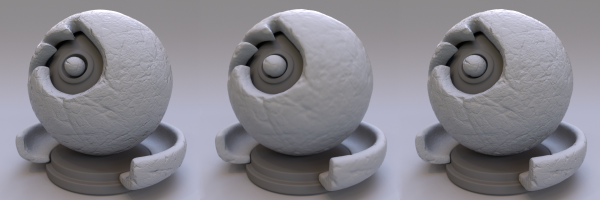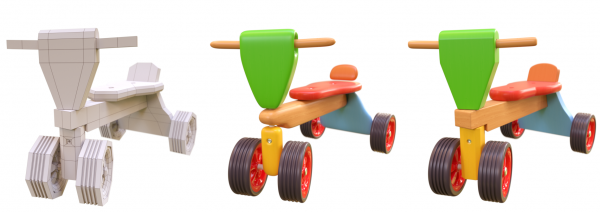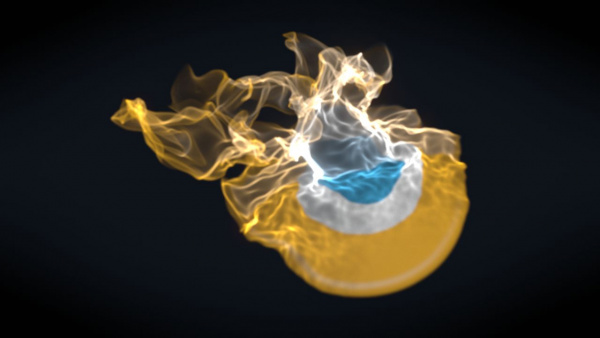Dev:Ref/Release Notes/2.78/Cycles
< Dev:Ref | Release Notes | 2.78
目次
Blender 2.78: Cycles
Spherical Stereo
Cycles now supports rendering spherical stereo images for VR. It includes support for pole merging to reduce artifacts when looking straight up or down. (de7a8af, cbe7f9d)
Multiple Scattering GGX
The glossy and glass BSDF nodes now have a Multiscatter GGX mode, which gives energy conserving results by simulating multiple scattering events within the microfacet layer. For rough metals and glass this solves excessive darkening.
Optimization
- Subsurface rays now using dedicated BVH, which optimized rendering time of those rays. (0e47e0c)
- Make Spatial Split BVH build multi-threaded. (bf55afb, d7e4f92)
- Optimized decoupled ray marching for heterogeneous volumes and transparent shadow rays. (7b356a8)
- Support CPU groups on Windows, making it possible to use Cycles on machines with more than 64 logical processors (b62faa5)
- Hair rendering will now use so-called unaligned BVH nodes which speeds up rendering up to 20% (4beae09)
- This new BVH type can be disabled with "Use Hair BVH" option in Preferences panel to get 20% memory save on a hairy scenes (6cd675a)
- Support visibility check in QBVH structure used by CPU. Gives up to 2x speedup in extreme render cases (1eacbf4)
- More automatic node shader optimizations based on exploiting known constant node inputs. (f7bada0, ea2ebf7, 1776f75)
GPU Rendering
- Support for NVidia GTX 1060, 1070, 1080 GPUs.
- Poor GPU rendering performance on NVidia GTX 980 Ti and Titan X has been solved (T45093)
- CUDA rendering now uses less per-thread memory, reducing the base memory required to render an empty scene by about 50% (999d5a6)
- OpenCL devices now support float4 textures (e.g. HDR textures). (76481ea)
- CPU and CUDA (Geforce 6xx and above, see below) devices now support single float and byte textures, reducing memory for e.g. Smoke and Bumpmaps. (4a4f043b, 3c85e1ca1)
- CUDA devices (Geforce 6xx and above), now support Bindless Textures. This results in unlimited image textures on GPU (only limited by VRAM) and adds support for single channel textures. (c9f1ed1e)
Subdivision and Displacement
While still an experimental feature that is not officially supported and should be considered incomplete and subject to change, the subdivision and displacement system has been significantly improved.
- Subdivision is now adaptive so near and far objects automatically get more and less subdivisions respectively. (ebfdd7da)
- Dicing rate is now a global option, with per-object dicing rate multipliers. (9f39619d)
- Per object subdivision settings are now found in the subdivision surface modifier, while displacement settings are now part of the material.
- Many limitations have been fixed, to properly preserve attributes, fix cracks, excessive subdivision, and more.
- Both linear and Catmull-Clark subdivision with creases are supported.
For more details on how to use this feature and the known limitations, see the Displacement documentation in the manual.
Various
- Resumable renders (samples offset) support. (f8b9f4e)
- Smoke volume support for Velocity and Heat attributes. (951fad2, f951cc3)
- Fluid simulation mesh support for motion blur and motion vectors (10b0e33d)
- Vertex color, weight and normal support for point density textures (bdae64767081)
